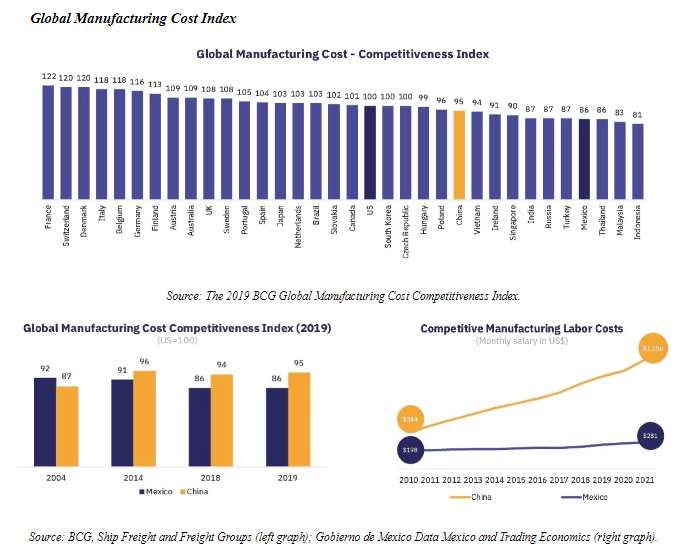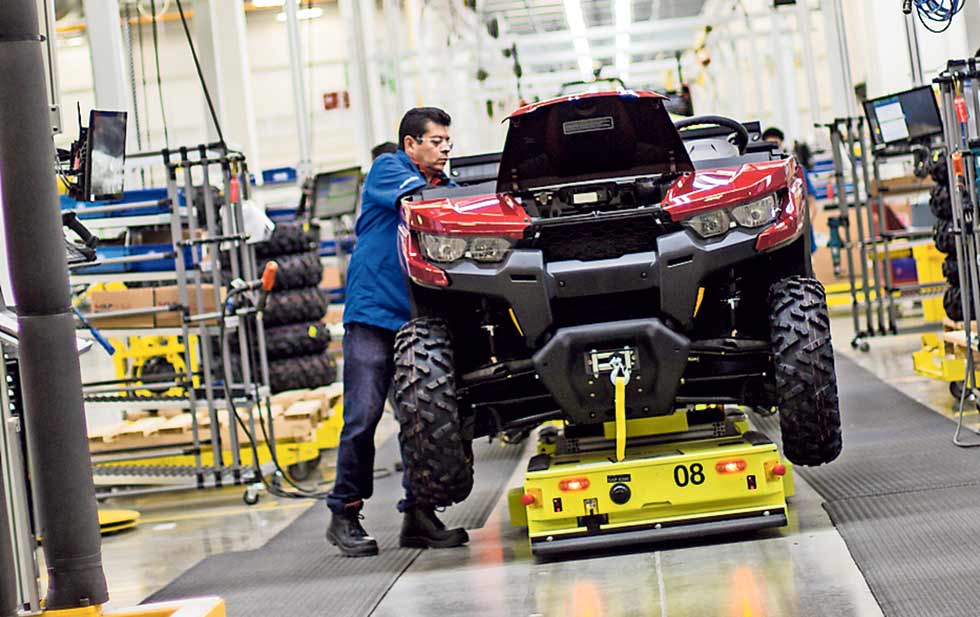According to BCG‘s Global Manufacturing Cost Competitiveness Index, Mexico and other countries in the Southeast Asia region, such as Thailand, Malaysia and Indonesia, offer the most competitive manufacturing costs in the world.
This index tracks changes in relative factory wages, productivity growth, foreign exchange rates and energy costs.
According to the Organization for Economic Co-operation and Development (OECD), average labor costs in Mexico are 22% of those of an equally skilled worker in the United States.

In addition, Kearney’s Reshoring 2022 Index Report highlights that Mexico’s strategic location to serve the U.S. market creates a competitive advantage for Mexico.
But more importantly, as a result of the U.S.–China trade and tariff war, U.S. imports from Mexico increased compared to U.S. imports from China.
From a logistics standpoint, real estate company Vesta believes it is easier and faster to manage production, warehousing or logistics centers from Mexico than from China.
For example, it takes approximately 37 days for a freight shipment to travel from Shanghai to Chicago, while it typically takes only seven days for the same amount of freight to travel from Querétaro, located in the Bajío region of central Mexico, to Chicago, according to BCG, Shipa Freight and Freight Qout.
Manufacturing Costs
During 2020 and 2021, manufacturing, one of the main drivers of growth in Mexico over the last decade, recorded a negative impact on production as restrictions imposed by the Covid-19 pandemic reduced demand, both in Mexico and abroad.
Among others, pandemic containment reduced production in 2020 and 2021 in industries such as automotive and electronics.
The gradual reopening of the economy in North America and the normalization of trade flows between the United States and Mexico since early 2022 have contributed to a faster recovery in manufacturing compared to other economic sectors.

